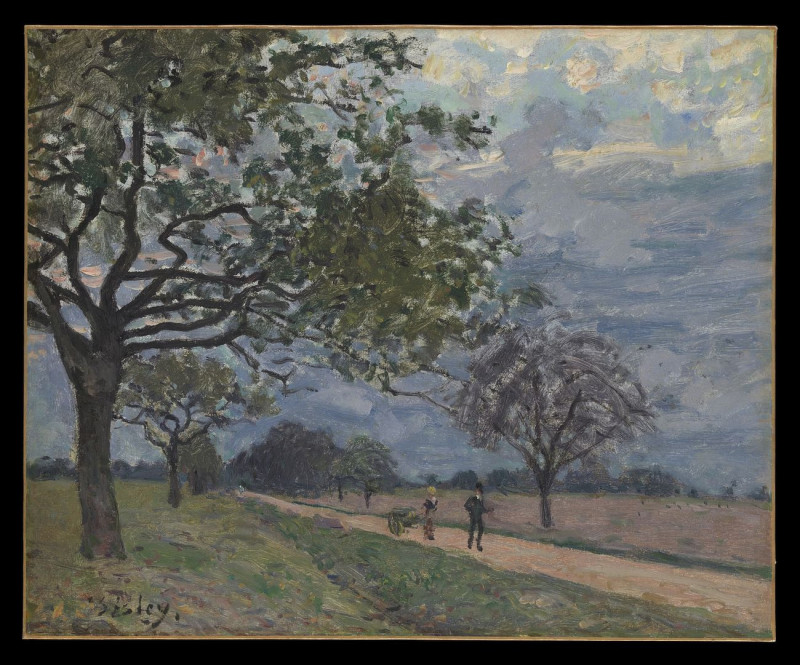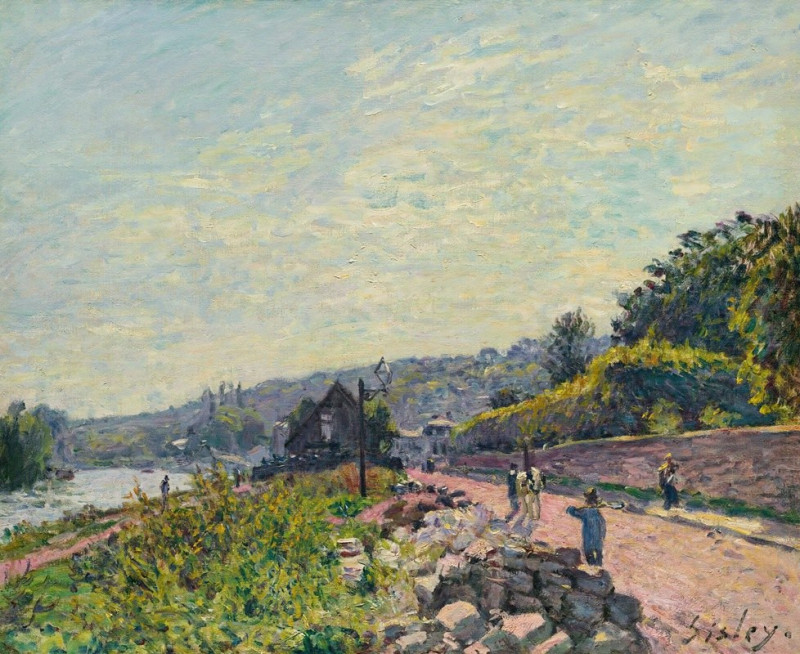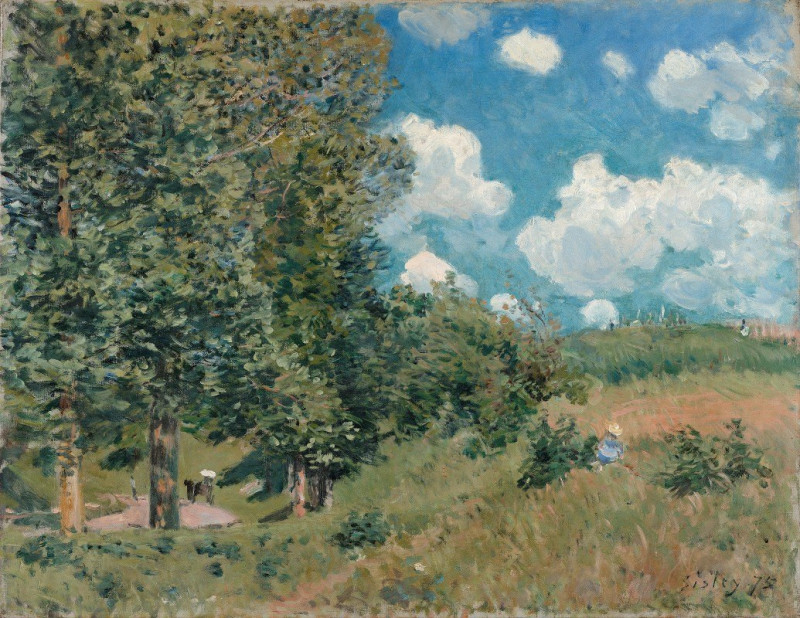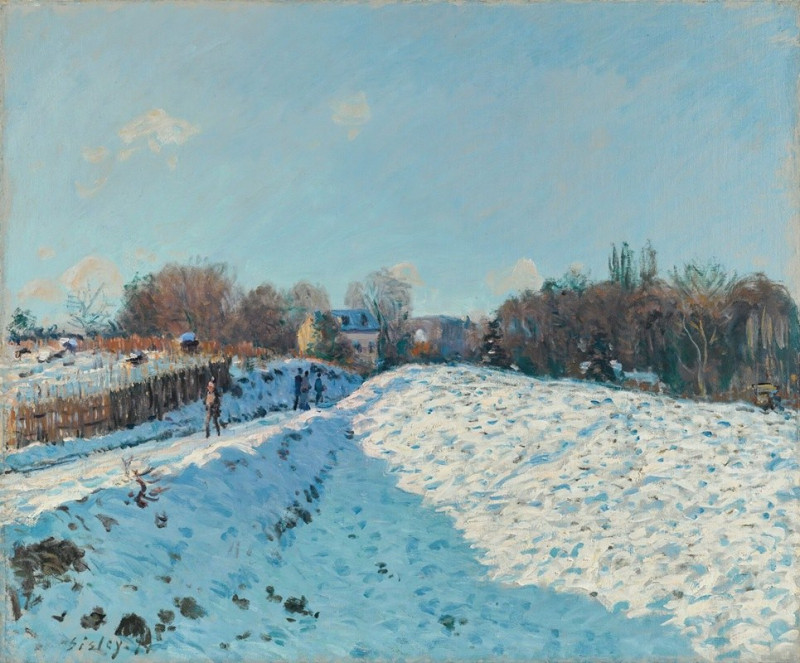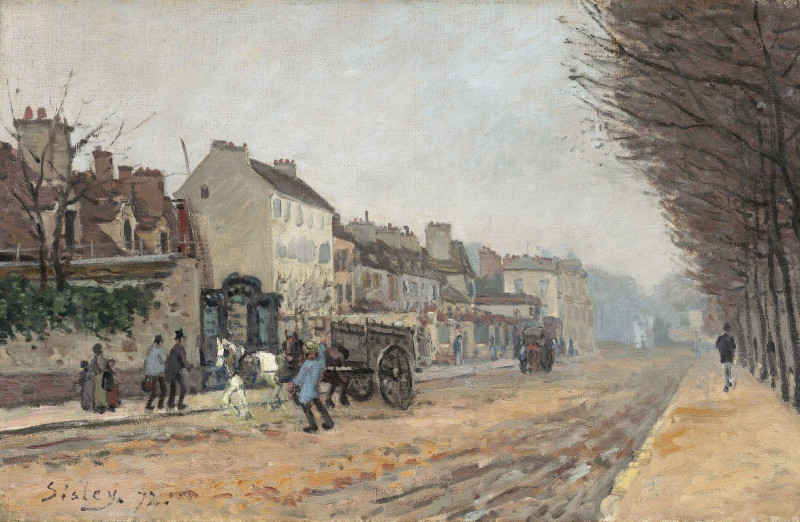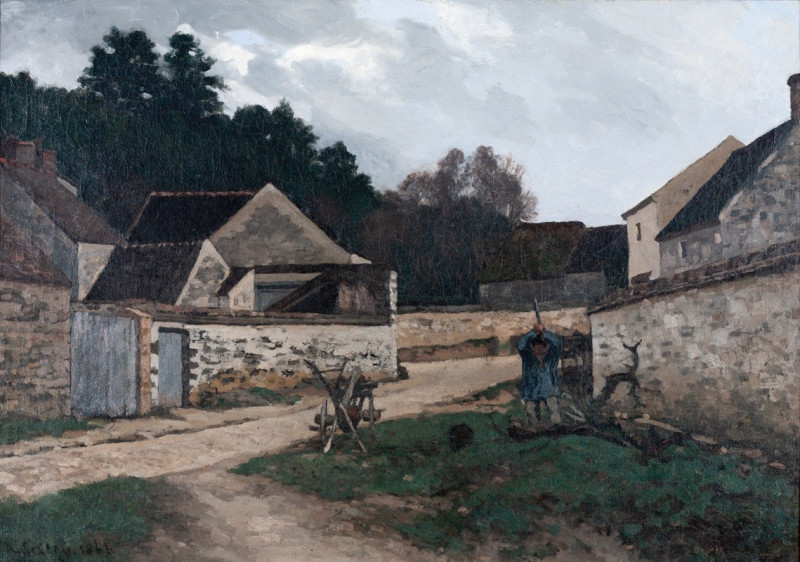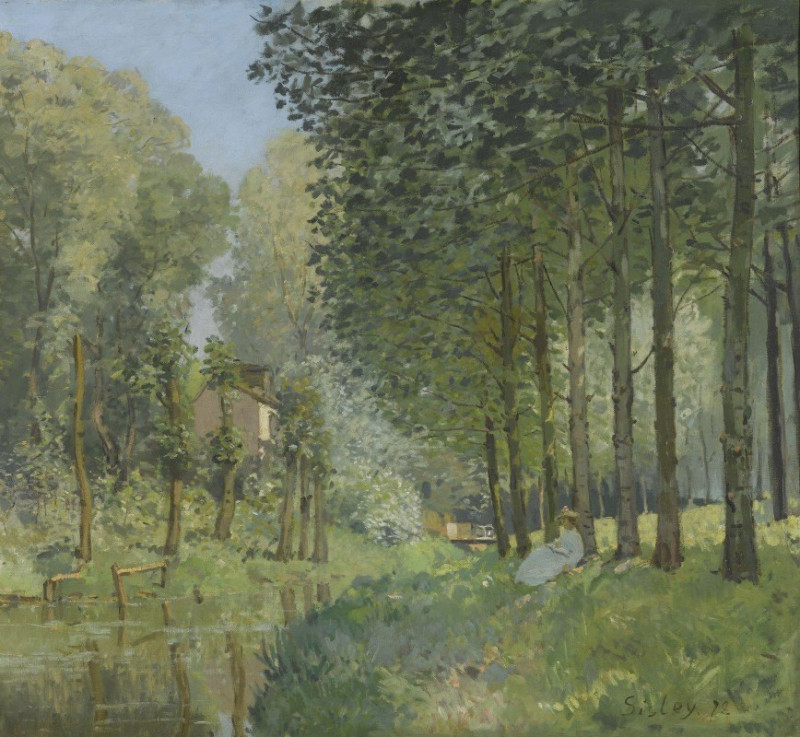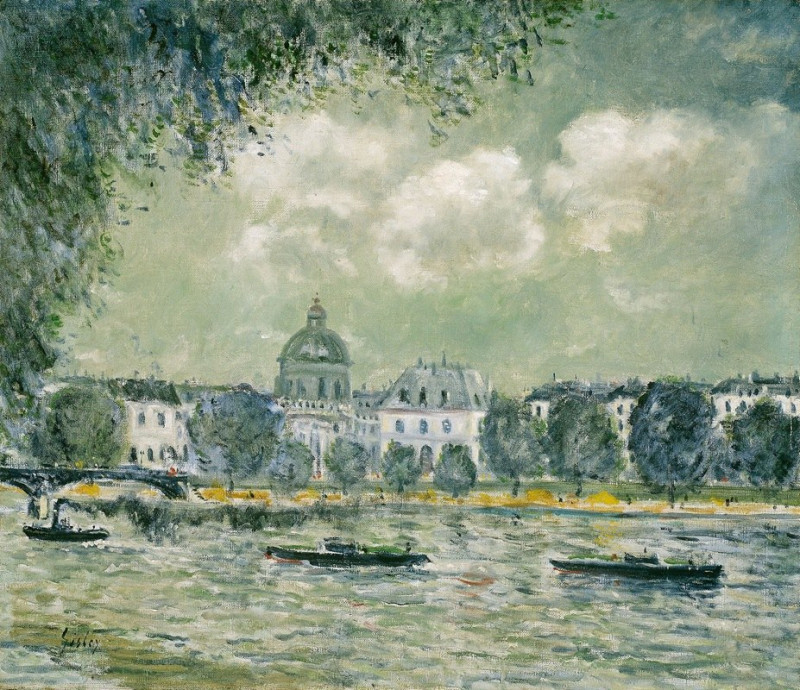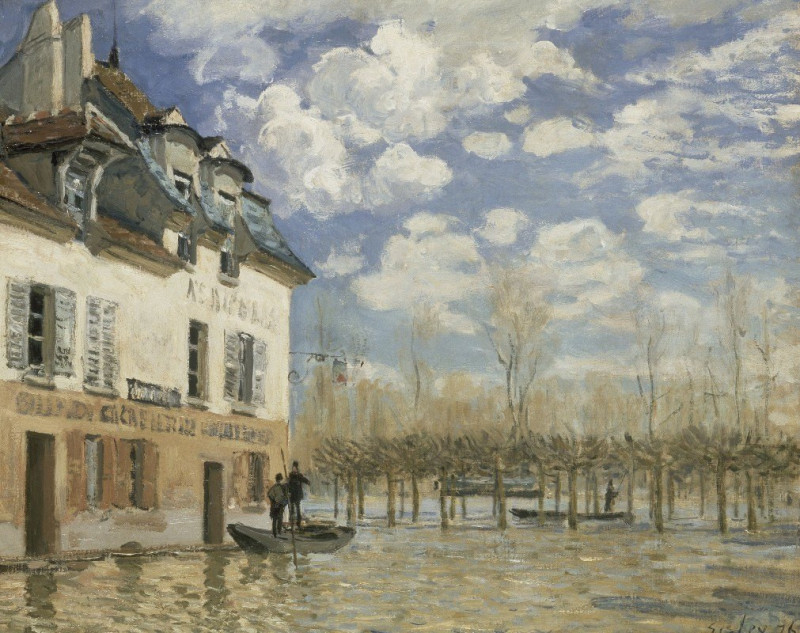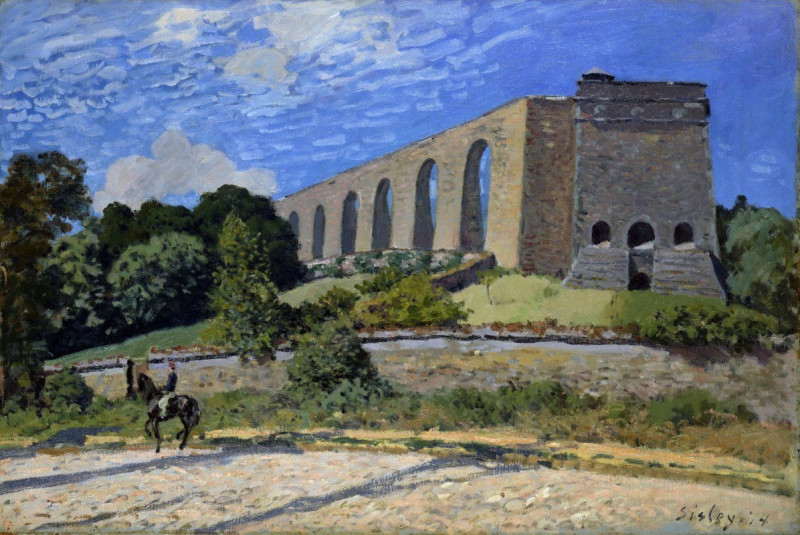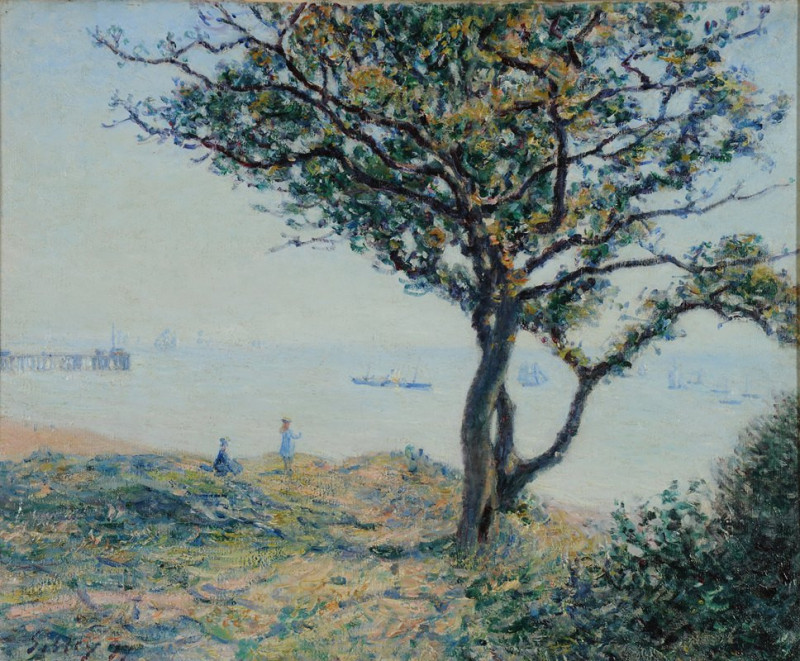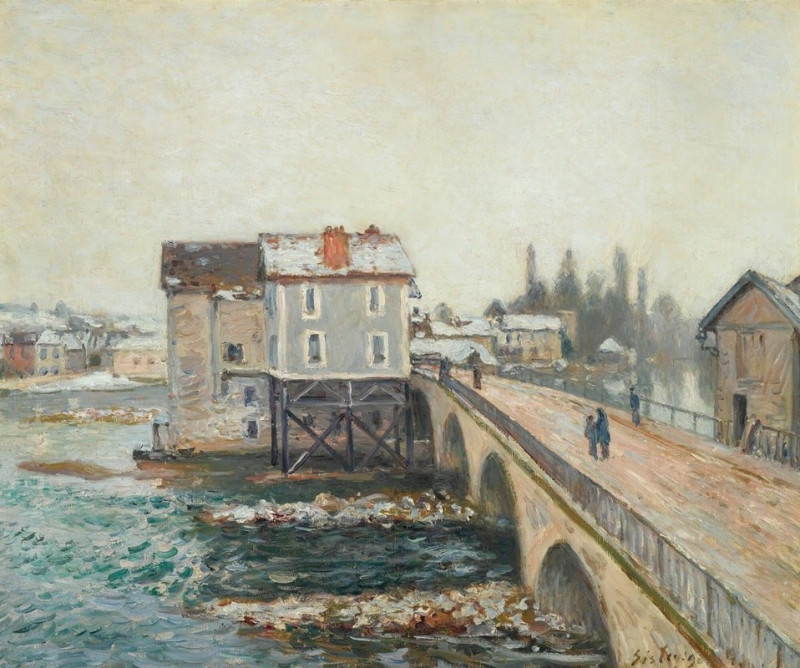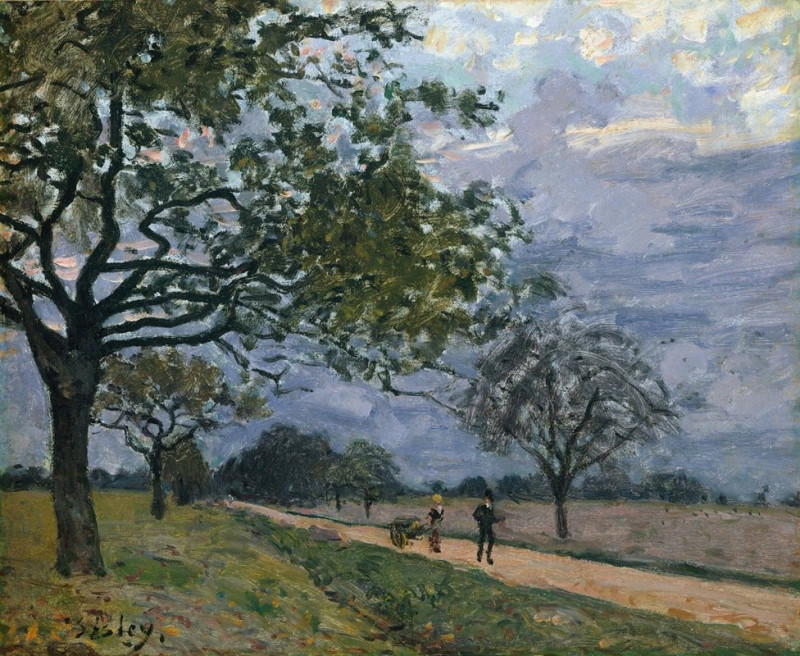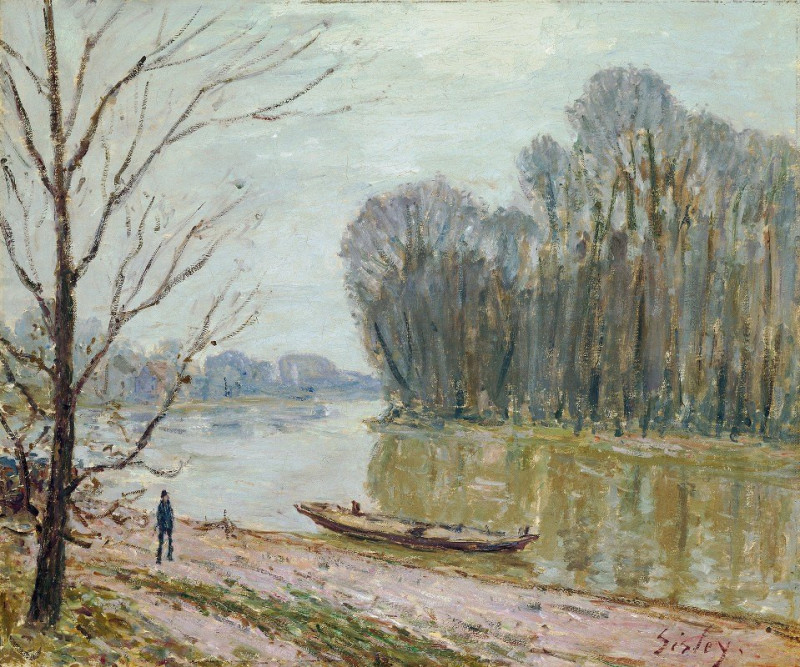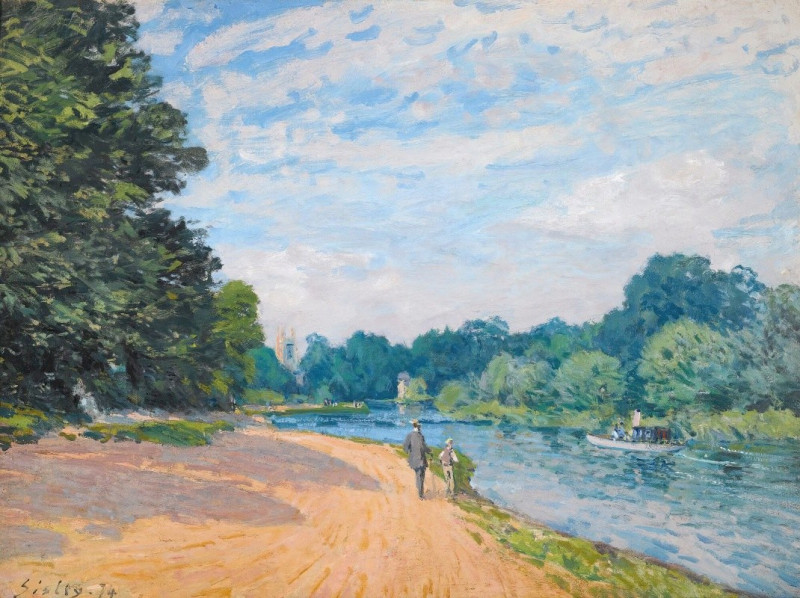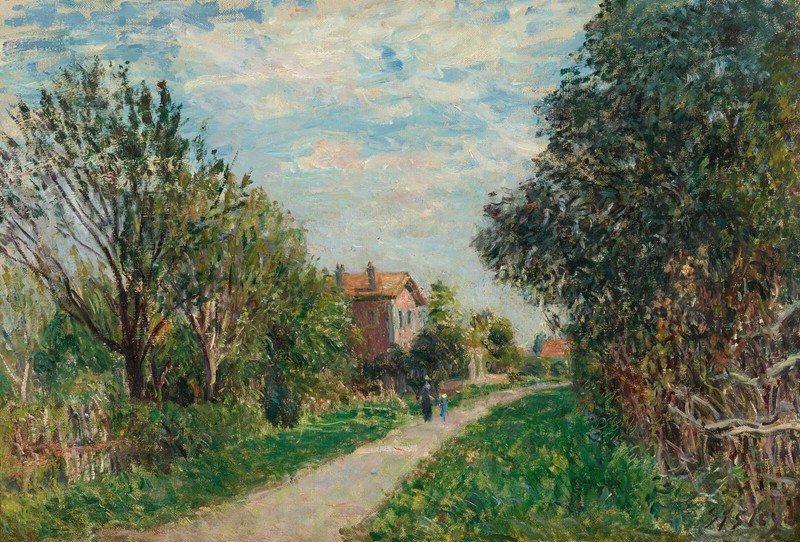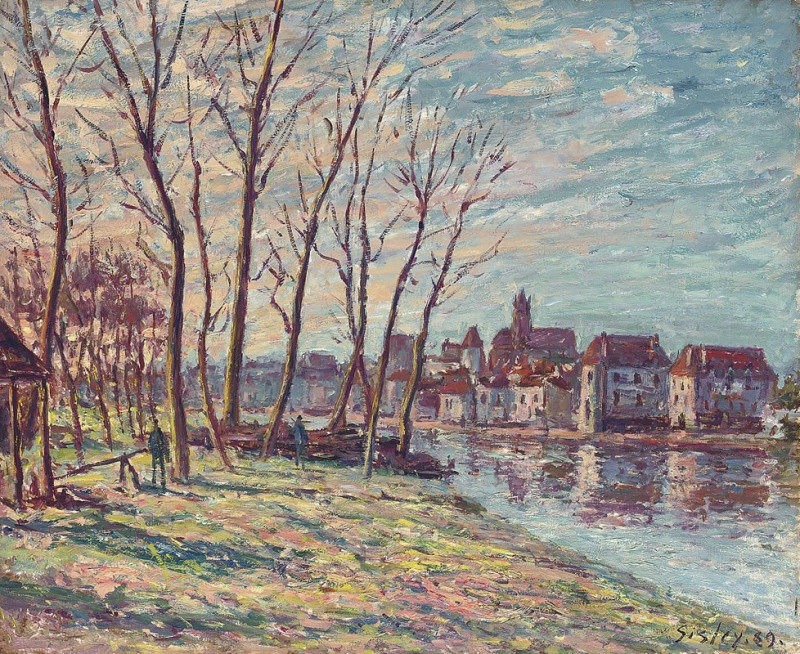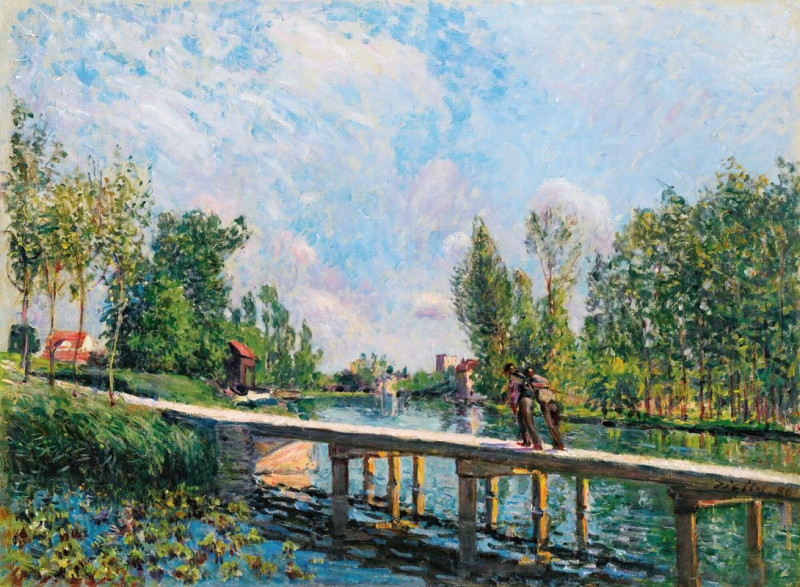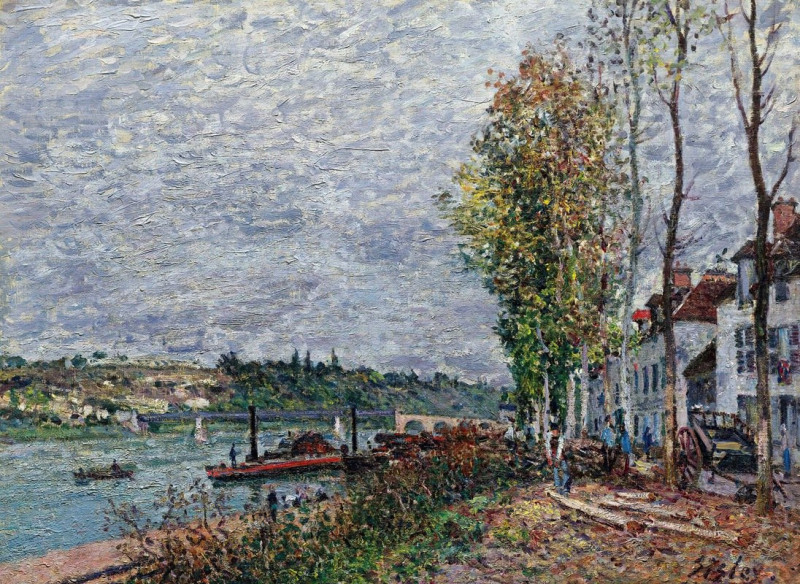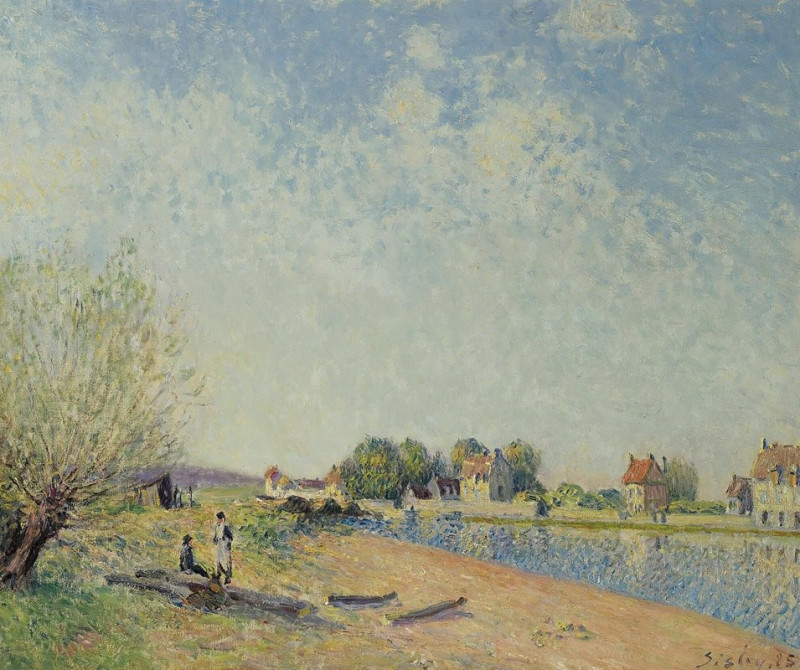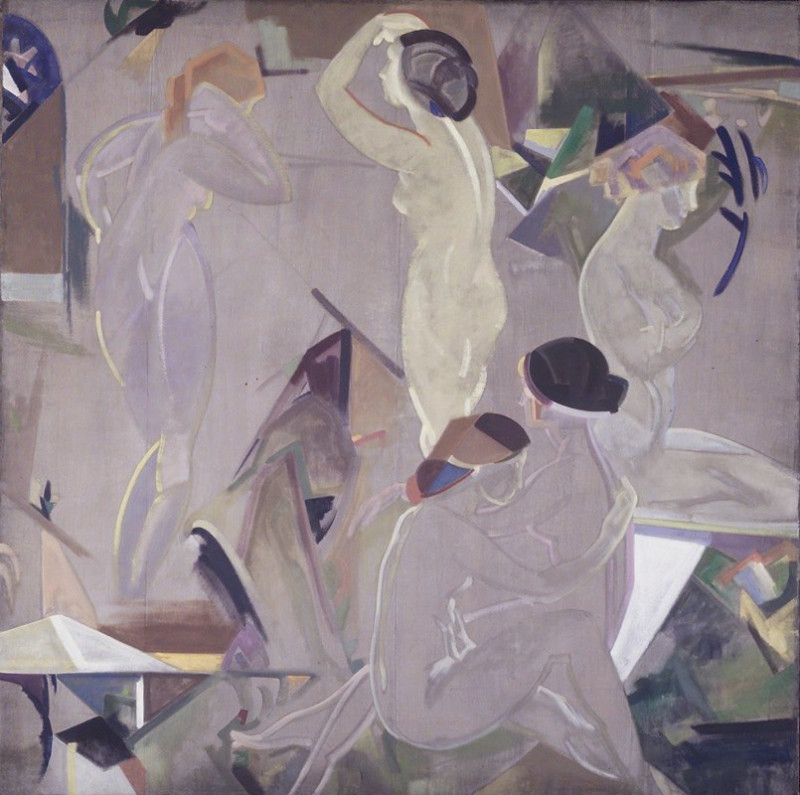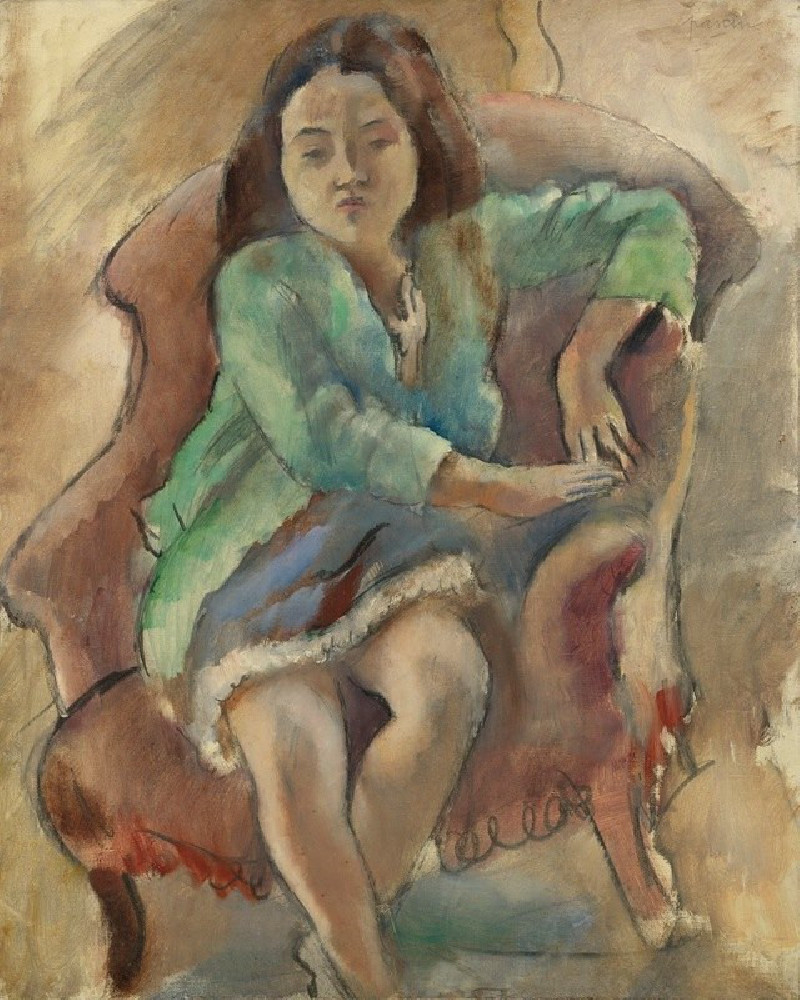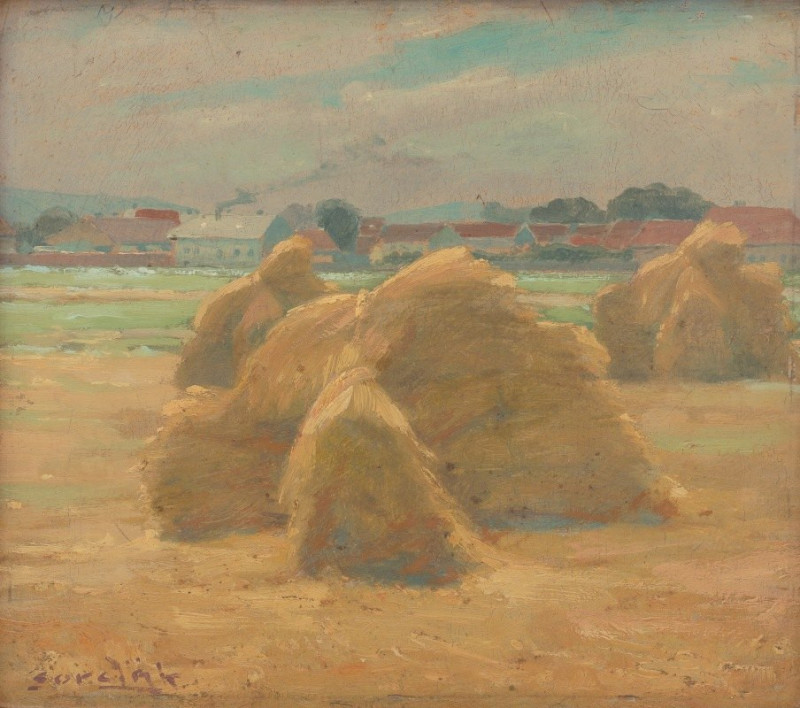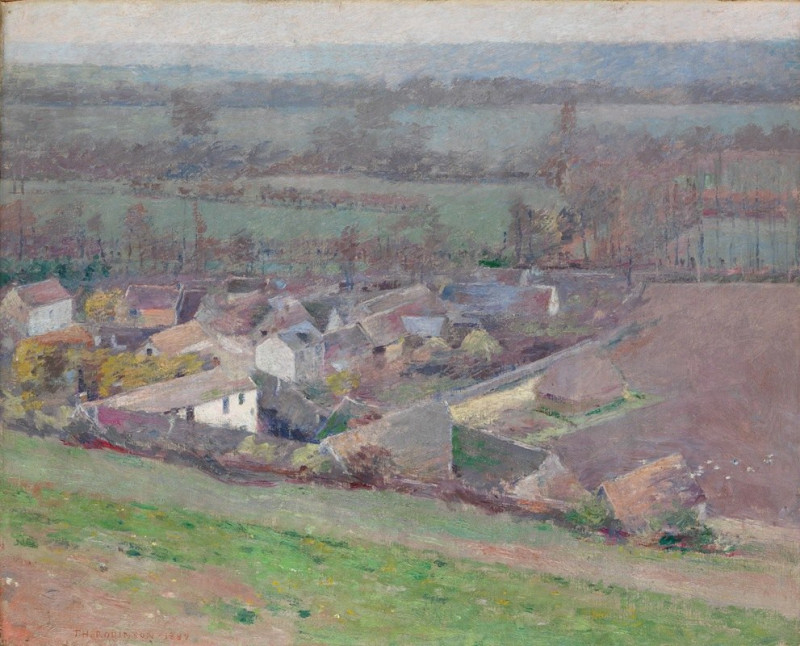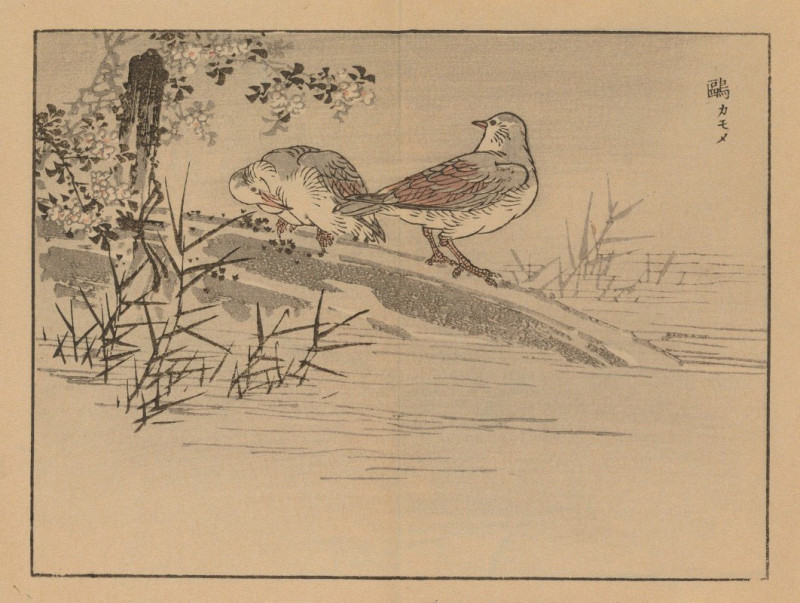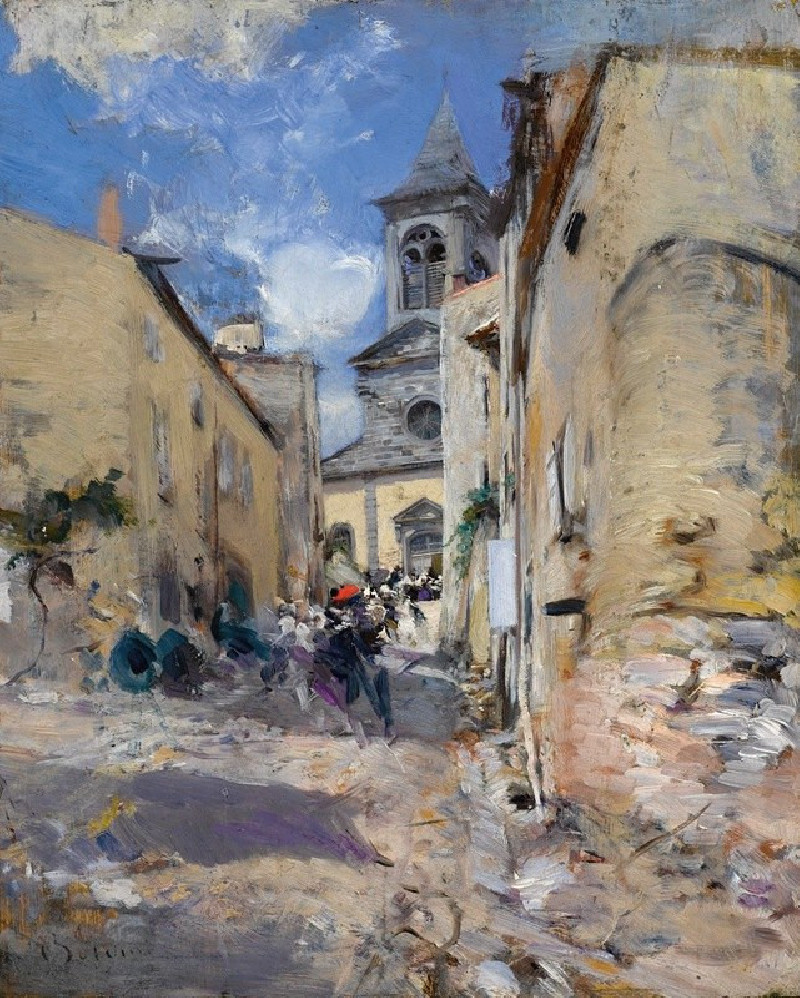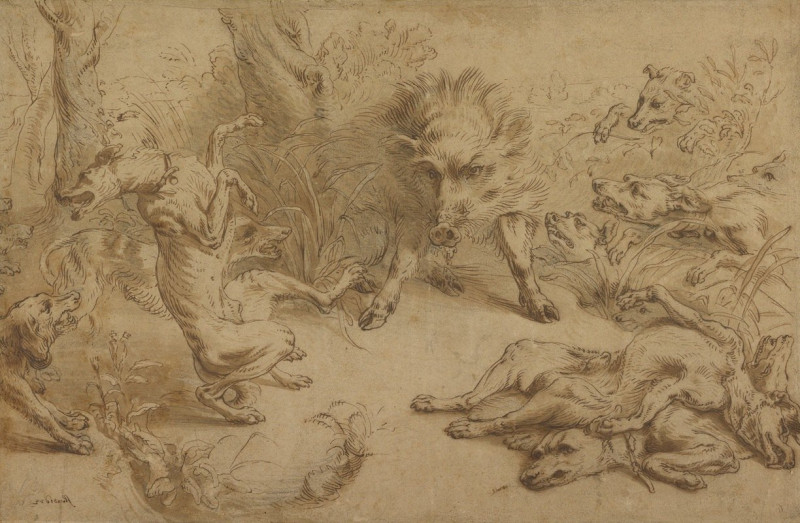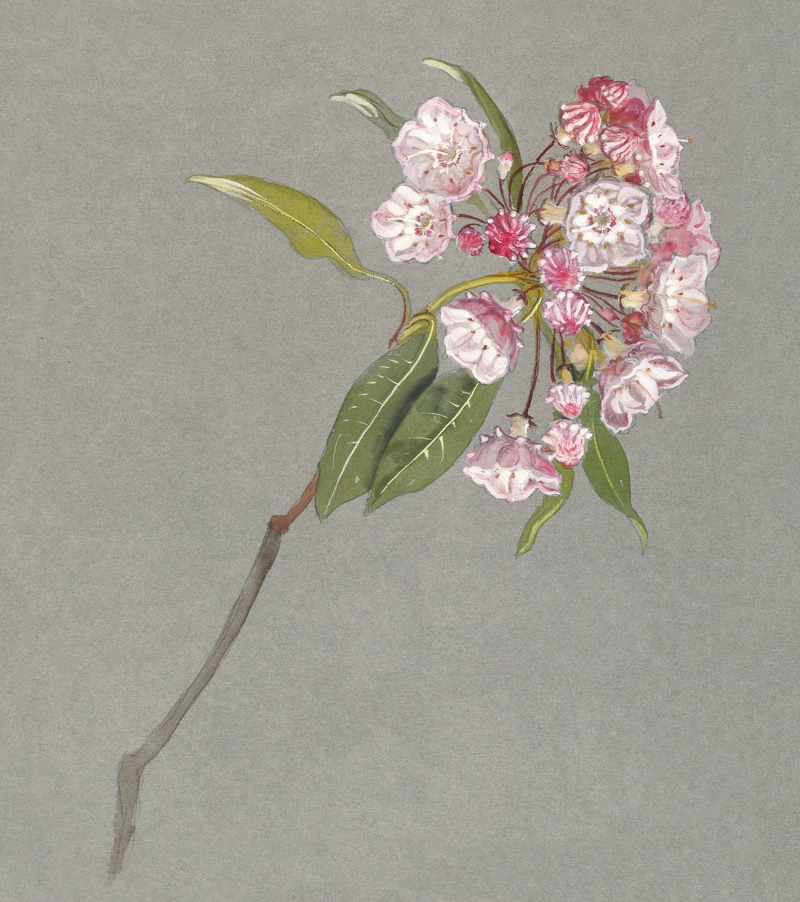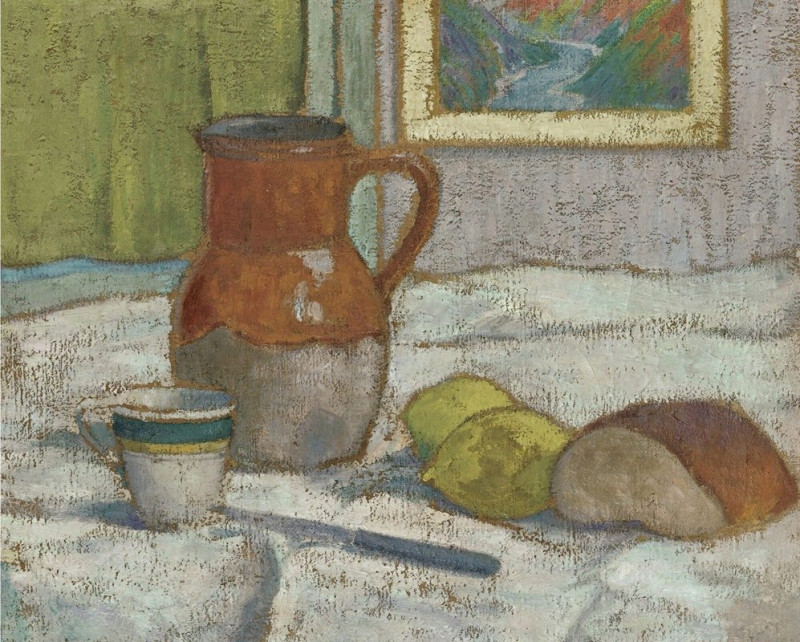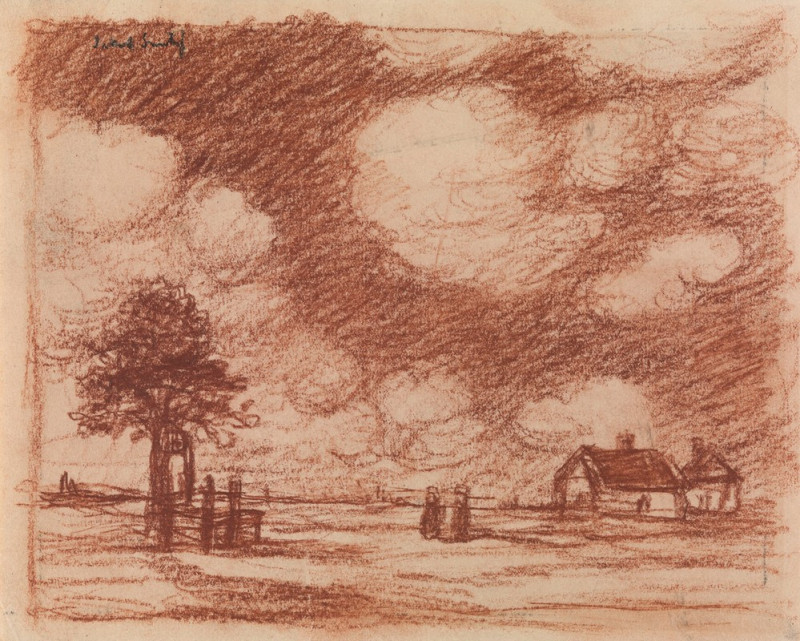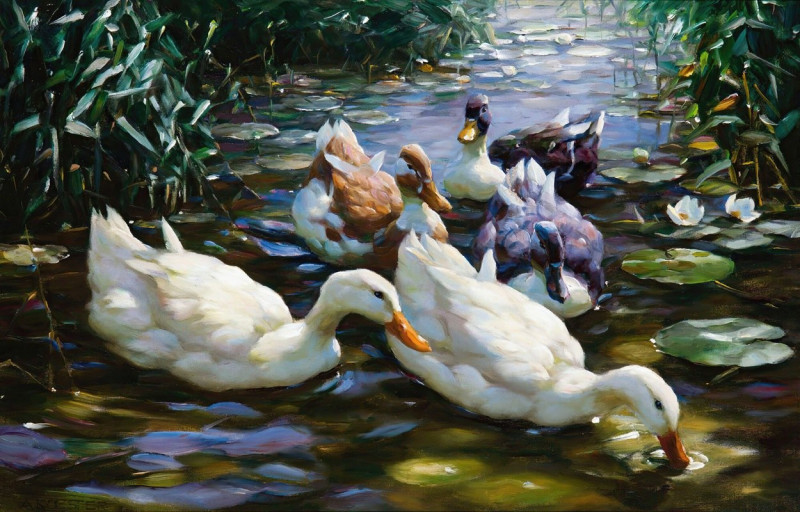The Road From Versailles To Louveciennes
Technique: Giclée quality print
Recommended by our customers
More about this artwork
"The Road from Versailles to Louveciennes" by Alfred Sisley is a beautiful impressionist painting that captures a serene moment along a countryside road. The scene is depicted with Sisley's characteristic light touch and subtle color palette, creating an atmosphere of peaceful simplicity.In the foreground, two dominant trees frame the scene, their intricate branches etched against the sky, suggesting the wild, natural growth. The leaves are painted in various shades of green, with hints of light filtering through them, lending a dappled effect to the ground beneath.The central part of the painting draws the viewer's eye along a meandering dirt road, leading into the distance. On this path, two figures are present, possibly travelers or locals, adding a human element to the landscape. Their presence is subtle, emphasizing the vastness and quiet of the surrounding nature.In the background, additional trees line the road and fade into a softly painted sky, which carries gentle tones of blue and gray mixed with warmer hues, suggesting either a setting sun or a break in the clouds. The overall effect is calming and invites the viewer to imagine a gentle stroll in the countryside, away from the hustle and bustle of urban life.Sisley's brushwork is loose and expressive, typical of the Impressionist style, which seeks to capture moments in time with an emphasis on light and natural forms.
Delivery
Returns
Alfred Sisley (1839–1899), an English impressionist artist, was renowned for his breathtaking impressionist landscape paintings. Born in 1839 to a wealthy family in Paris, Sisley spent most of his life in France. Despite being intended for a career in commerce, he rebelled and pursued his passion for painting as an amateur in the studio of Charles Gleyre, where he befriended artists Claude Monet and Pierre-Auguste Renoir. The financial loss of his family in the Franco-German War led Sisley to make a career out of his art, though it left him financially distressed. It wasn't until after his passing in 1899 that the true value of his work was recognized.

